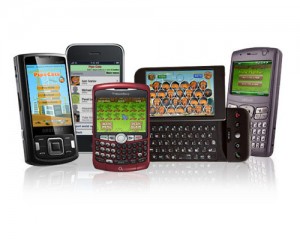A new study has revealed that many gadgets overestimate the number of hours wearers are sleeping.
As 2016 gets off to a new start and people begin their resolutions, many are using wearable technology to help them to try to get in shape, improve their fitness, lose weight, or achieve better overall health.
As a part of that, many users of wearables have been tracking their sleeping habits through their gadgets.
That said, a new study has now suggested that the promises made by wearable technology to help you to measure the length of a night’s sleep may not be accurate at all. The research showed that devices, which primarily included Fitbit and Jawbone gadgets, were overestimating the number of hours of sleep people were actually receiving. This study was conducted as a review of 22 other published studies that used these device for this purpose.
Many of the articles found the wearable technology could accurately complete their measuring functions.
 Sleep wasn’t the only issue that was pointed out in this research. Both the Fitbit and Jawbone devices were shown in many of the articles to be able to complete the counting tasks in a lab as well as in the field. However, there was only a single study that had actually looked into the capability for Fitbit to measure distance. What it found was that Fitbit was programmed to overestimate a slower speed and would underestimate a faster speed. This could cause the results to be skewed.
Sleep wasn’t the only issue that was pointed out in this research. Both the Fitbit and Jawbone devices were shown in many of the articles to be able to complete the counting tasks in a lab as well as in the field. However, there was only a single study that had actually looked into the capability for Fitbit to measure distance. What it found was that Fitbit was programmed to overestimate a slower speed and would underestimate a faster speed. This could cause the results to be skewed.
The accelerometry was a central component for measuring the wearer’s physical activity. The study indicated a strong link between slower and faster motion and inaccurate results. Moreover, when conducting an assessment of several comparative analyses of the wearable tech devices, the researchers determined that the wearables from both brands were underestimating calorie levels while they were overestimating the number of hours a user was sleeping.
The outcome of the new study was, therefore, that while these devices are relatively precise when it came to functioning as a pedometer that would count steps, they may not be nearly as accurate in their ability to calculate the number of calories that are burned or the number of hours of sleep an individual may be receiving.
Nearly 35 percent of smartphone owners will update their handsets this year, regardless of current device function.
In Australia, the Deloitte mobile customer survey has revealed that regardless of whether or not the current mobile technology is still fully functional, 35 percent of smartphone owners will be updating their handsets at some point this year.
Nearly half of all mobile phone owners will be holding onto their current devices instead of trading them in or selling.
That said, when it comes to the same mobile technology survey, it appears that many Australians are hanging onto their old devices when they’re not using them anymore. While 48 percent plan to keep their current smartphones and continue using them, this year, 27 percent will give them away to someone else who can use them. Another 15 percent will recycle their old devices and 8 percent will sell them. Two percent plan to replace their devices because they have gone missing.
With only 15 percent selling their devices after they don’t need them, Australians are skipping an opportunity to make money.
 When comparing this trend to the rest of the world, it is Singapore that is the region with the largest number of people who sell their old device models. Among them, 26 percent have done so. In second place is the United Kingdom, where 21 percent of device owners will be selling their gadgets when they replace them. Japan is not far behind, with 20 percent taking part in this online selling opportunity. In Germany, 16 percent will do so. Australia is ahead of only Canada, where only 13 percent of consumers will sell their used devices when they purchase new ones this year.
When comparing this trend to the rest of the world, it is Singapore that is the region with the largest number of people who sell their old device models. Among them, 26 percent have done so. In second place is the United Kingdom, where 21 percent of device owners will be selling their gadgets when they replace them. Japan is not far behind, with 20 percent taking part in this online selling opportunity. In Germany, 16 percent will do so. Australia is ahead of only Canada, where only 13 percent of consumers will sell their used devices when they purchase new ones this year.
According to Jeremy Drumm, the lead author of the Deloitte report, a surprisingly large number of Australians simply tuck their older smartphone models into a drawer when they replace them. The majority do so in order to make sure they have a replacement quickly available if anything should happen to their newer model.
That said, this means that the mobile technology isn’t benefiting a friend or family member and it is not being sold in order to make a bit of money and provide someone else with an affordable device. This trend suggests that there is a considerable amount of waste being generated by the current device replacement habits in the country.
 Sleep wasn’t the only issue that was pointed out in this research. Both the Fitbit and Jawbone devices were shown in many of the articles to be able to complete the counting tasks in a lab as well as in the field. However, there was only a single study that had actually looked into the capability for Fitbit to measure distance. What it found was that Fitbit was programmed to overestimate a slower speed and would underestimate a faster speed. This could cause the results to be skewed.
Sleep wasn’t the only issue that was pointed out in this research. Both the Fitbit and Jawbone devices were shown in many of the articles to be able to complete the counting tasks in a lab as well as in the field. However, there was only a single study that had actually looked into the capability for Fitbit to measure distance. What it found was that Fitbit was programmed to overestimate a slower speed and would underestimate a faster speed. This could cause the results to be skewed.
 When comparing this trend to the rest of the world, it is Singapore that is the region with the largest number of people who sell their old
When comparing this trend to the rest of the world, it is Singapore that is the region with the largest number of people who sell their old 